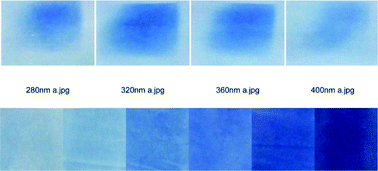From ultraviolet to Prussian blue: a spectral response for the cyanotype process and a safe educational activity to explain UV exposure for all ages
Abstract
Engaging students and the public in understanding UV radiation and its effects is achievable using the real time experiment that incorporates blueprint paper, an “educational toy” that is a safe and easy demonstration of the cyanotype chemical process. The cyanotype process works through the presence of UV radiation. The blueprint paper was investigated to be used as not only engagement in discussion for public outreach about UV radiation, but also as a practical way to introduce the exploration of measurement of UV radiation exposure and as a consequence, digital image analysis. Tests of print methods and experiments, dose response, spectral response and dark response were investigated. Two methods of image analysis for dose response calculation are provided using easy to access software and two methods of pixel count analysis were used to determine spectral response characteristics. Variation in manufacture of the blueprint paper product indicates some variance between measurements. Most importantly, as a result of this investigation, a preliminary spectral response range for the radiation required to produce the cyanotype reaction is presented here, which has until now been unknown.


 Please wait while we load your content...
Please wait while we load your content...